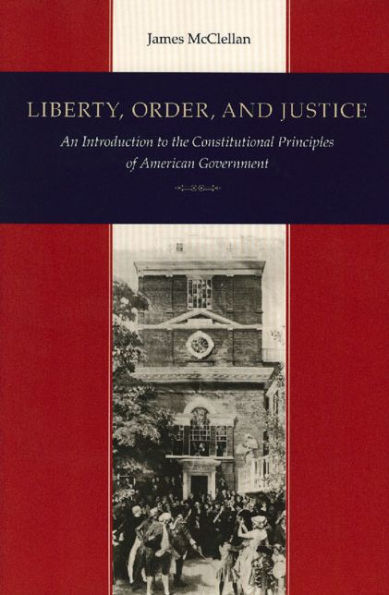Table of Contents
Preface xvii
PART 1.
The Constitution’s Deep Roots 1
The Meaning of Constitutional Government 2
The Lamp of Experience 10
The Constitutions of Antiquity 14
English Origins of America’s Constitution 22
The Growth of Parliament 26
The Challenge of Parliamentary Supremacy 28
The Common Law Tradition 32
The Republican Tradition and the Struggle for Constitutional Liberty 39
The Influence of Continental Thinkers 47
The Education of the Founders 49
The French and American Revolutions Compared 52
Suggested Reading 60
APPENDIX A. Relevant Chapters of Magna Charta (1215) 63
APPENDIX B. Petition of Right (1628) 75
APPENDIX C. The English Bill of Rights (1689) 80
PART 2.
America’s First Constitutions and Declarations of Rights 89
Colonial Governments 92
Relations with Great Britain 103
Local Government in the Colonies 107
Civil Liberties in the Colonies 108
The Movement Toward Independence 111
The Declaration of Independence 121
The Rights Proclaimed 137
The First State Constitutions, 1776–1783 141
The Articles of Confederation 152
Suggested Reading 164
APPENDIX A. The Mayflower Compact 167
APPENDIX B. Fundamental Orders of Connecticut 168
APPENDIX C. Declaration and Resolves of the First Continental Congress 171
APPENDIX D. Declaration of the Causes and Necessity of Taking Up Arms 176
APPENDIX E. The Declaration of Independence (1776) 183
APPENDIX F. Virginia Bill of Rights 188
APPENDIX G. Thoughts on Government 191
APPENDIX H. Massachusetts Constitution of 1780 199
APPENDIX I. Articles of Confederation (1778) 230
PART 3.
The Achievement of the Philadelphia Convention 241
The Problems of the Convention 242
The Delegates to the Convention 246
A Wide Range of Talents 248
Plans and Progress at Philadelphia 253
The Meaning of ‘‘Federal’’ 255
The Virginia Plan: A Supreme National Government 257
Hamilton’s Concept of a Unified America 259
The New Jersey Plan: Checks upon Central Power 262
The Benefits of Compromise 263
Compromise and Consensus 269
Suggested Reading 273
APPENDIX A. Virginia Plan 275
APPENDIX B. New Jersey Plan 278
APPENDIX C. Constitution of the United States of America (1787) 281
PART 4.
Basic Constitutional Concepts: Federalism, Separation of Powers, and Rule of Law 295
A. FEDERALISM 297
Powers Delegated to Congress 299
Powers Denied to Congress 300
Powers Denied to the States 301
The Division of Powers 302
The Supremacy Clause 306
National and State Obligations 307
Obligations of the National Government to the States 308
Obligations of the States to the National Government 309
Obligations of the States to Each Other 309
The Role of the States in the Amendment Process 310
The Federalism Factor 311
The Advantages of Federalism 316
The Future of Federalism 321
B. THE SEPARATION OF POWERS 327
Checks and Balances 331
Checks upon the Congress 332
Checks upon the President 333
Checks upon the Judiciary 333
The Independence of Congress 334
The Independence of the President 334
The Independence of the Judiciary 335
Summary and Review 335
Separation of Powers: A Critical Evaluation 337
Separation of Powers at the Crossroads 341
C. THE RULE OF LAW 347
The Basic Principles of the American Constitution 351
Suggested Reading 354
APPENDIX A. The Federalist No. 10 357
APPENDIX B. The Federalist No. 45 365
APPENDIX C. The Federalist No. 47 371
PART 5.
Defending the Constitution: The Struggle over Ratification and the Bill of Rights 381
A. THE ANTI-FEDERALIST PERSUASION 385
The Constitution Establishes a Consolidated Empire 385
The Constitution Establishes an Aristocracy 386
The Constitution Confers Too Much Power 389
An Imperial Congress 389
An Elected Monarch 390
An Omnipotent Judiciary 391
B. THE FEDERALIST RESPONSE 392
The Constitution Limits and Distributes Power 393
Congress Is Not an Oligarchy 398
The President Is Not a King 400
The Judiciary Is the Least Dangerous Branch 400
Whether a Bill of RightsWas Necessary 401
The Clash of Values 403
C. THE BILL OF RIGHTS 409
The First Amendment: Religious Freedom, and Freedom to Speak, Print, Assemble, and Petition 415
The Second Amendment: The Right to Bear Arms 419
The Third Amendment: Quartering Troops 419
The Fourth Amendment: Search and Seizure 420
The Fifth Amendment: Rights of Persons 420
The Sixth Amendment: Rights of the Accused 421
The Seventh Amendment: Trial by Jury in Civil Cases 422
The Eighth Amendment: Bail and Cruel and Unusual Punishments 422
The Ninth Amendment: Rights Retained by the People 423
The Tenth Amendment: Rights Retained by the States 425
Rights Versus Duties 426
Suggested Reading 427
APPENDIX A. The Address and Reasons of Dissent of the Minority of the Convention of the State of Pennsylvania to Their Constituents 429
APPENDIX B. Northwest Ordinance (1787) 454
PART 6.
Interpreting and Preserving the Constitution 463
Principles of Statutory Construction 465
The Doctrine of Judicial Review 476
The Supreme Court as Final Interpreter 486
The States as Final Interpreters 490
Strict Versus Loose Construction 495
The Independence of the Judiciary 500
A. ORIGINS OF JUDICIAL INDEPENDENCE 501
B. THE JUDICIAL POWER 508
C. JURISDICTION 511
Suggested Reading 516
APPENDIX A. Marbury v. Madison 519
APPENDIX B. Martin v. Hunter’s Lessee 526
APPENDIX C. Washington’s Farewell Address (1796) 533
PART 7.
Changing the Constitution—Together with an Explanation of the Amendments Added Since 1791 551
Our Living Constitution 552
Our Changing Constitution 556
Amending the Constitution 560
The Limits of the Amending Power 563
The Amended Constitution 566
A. AMENDMENT XI (1798) 566
B. AMENDMENT XII (1804) 567
C. AMENDMENT XIII (1865) 569
D. AMENDMENT XIV (1868) 570
E. AMENDMENT XV (1870) 575
F. AMENDMENT XVI (1913) 577
G. AMENDMENT XVII (1913) 578
H. AMENDMENT XVIII (1919) 582
I. AMENDMENT XIX (1920) 583
J. AMENDMENT XX (1933) 583
K. AMENDMENT XXI (1933) 585
L. AMENDMENT XXII (1951) 585
M. AMENDMENT XXIII (1961) 586
N. AMENDMENT XXIV (1964) 587
O. AMENDMENT XXV (1967) 587
P. AMENDMENT XXVI (1971) 589
Q. AMENDMENT XXVII (1992) 590
Conclusion 594
Suggested Reading 600
Index 603




